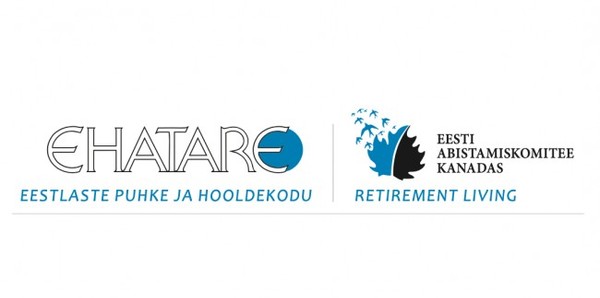to Ain Söödor's review of The Radical Right in Interwar Estonia
Ain Söödor's review of my book "The Radical Right in Interwar Estonia" illustrates the problem of a political polemicist reviewing a book written for an academic readership. He clearly has little knowledge of scholarly practices, and appears unaware of the difference between personal opinion and research-based views.
Mr Söödor uses his lengthy review to present his personal views on Estonian history. Leaving aside untenable assertions such as Estonian independence in 1918 actually being a "restoration" (this is correct if applied to 1991, but not to 1217 - Lembitu was certainly not the head of a state!), these appear to be: a) That the Veterans' League was a fascist movement determined to subvert the legitimate government by violent means; b) That Konstatin Päts was justified in seizing power in order to prevent a coup by the Veterans; c) That Estonians were not politically mature enough for democracy, and that Päts was providing guidance in that direction; d) That all of the achievements of independent Estonia were largely due to Päts.
In order to support these opinions, Söödor makes use of frequent, lengthy citations from my text, re-arranged out of context. If I were to correct all the misrepresentations and factual errors that he makes, then my response would be longer than his ten part review! Furthermore, he makes analogies that can only be described as ludicrous, e.g. comparing the Päts coup to Pierre Trudeau's invoking of the War Measures Act (as if Trudeau banned political parties, cancelled elections, and ruled for years by emergency powers).
The Veterans' League was the largest, most popular political movement in interwar history which enjoyed the support of a substantial percentage of Estonians. To understand the reasons for this popularity, as well as the political, social and economic context in which it arose, one has to read my book more carefully than Mr Söödor has apparently done.
Throughout his review Söödor claims that the Veterans' League was planning to carry out a, coup d'etat in 1934. However, after Päts took power,the Estonian political police carried out 8487 interrogations,1337 searches, and compiled 19,379 pages of material, but found no evidence to substantiate this claim. That charge against the leaders of the Veterans' League was dropped. Mr. Söödor evidently knows something that the investigators missed.
Söödor consistently identifies the nation (and its achievments) with Päts and claims that Päts almost singlehandedly "convinced Estonians that they had what it takes to create a free and independent Republic". That there were others who made equally important contributions to the creation of independent Estonia is ignored by Söödor . Many of those who fought for Estonian independence were later members of the Veterans' League (considered as fascist by Söödor).
Estonia was indeed free and independent, however, after Päts' coup in 1934 it could hardly be considered democratic. The Päts constitution (adopted in 1938) was in many respects more authoritarian than that of the Veterans' League, concentrating political power in the presidency, leaving the Riigikogu (parliament) as little more than a debating society. Söödor is unaware that most professional historians working in Estonia today do in fact use the term "authoritarian" to describe the Päts' rule. Furthermore, most consider the absence of democracy to have been a contributing factor in the government's willingness to capitulate to the Soviets in 1939/40. Though Mr Söödor portrays me as someone out to get Päts, I have often defended Päts ' motives against many of my history students at Tartu University who, following Magnus Ilmjärv's arguments, are inclined to interpret Päts' behaviour less benevolently than I.
In his eagerness to deify Päts, Söödor ignores other leaders who contributed to Estonia's political development. When four former heads of government (Tõnisson, Kukk, Teemant, and Piip) presented a memorandum to Päts in 1936, demanding the easing of martial law prior to National Assembly elections, Söödor agrees with Päts' response that these 4 gentlemen could not guarantee a repetition of Dec. 8th 1935 (the date of the Veterans' planned coup). Päts certainly knew that, with the Veterans' League leadership sitting in jail, the possibility of any coup was extremely remote. When the elections were held, most of the opposition boycotted the elections (with only 30 of the 80 electoral districts being contested) because the rules were rigged. Söödor could broaden his outlook on Estonia's political development by reading more about Jaan Tõnisson, a politician who did not bend the rules or ignore the constitution for political gain.
(To be continued)
A response (3)
Archived Articles | 30 Oct 2002 | Andres KasekampEWR
Viimased kommentaarid
Kommentaarid on kirjutatud EWR lugejate poolt. Nende sisu ei pruugi ühtida EWR toimetuse seisukohtadega.
is exactly what Söödors articles were IMHO. I agree with Usku Matu. Just my 2 cents worth.
The tone of this response, and the earlier ones posted by Usku Matu indicates a similar blinkered bias that he is accusing Sööder of.
Not healthy to get personal - a careful reading of Sööder does not suggest any kind of hatchet job!
Not healthy to get personal - a careful reading of Sööder does not suggest any kind of hatchet job!
Considering the hatchet job perpetrated on Dr. Kasekamp previously by Ain Söödor, it is both gratifying and a pleasure to read his knowledgeable response to a diatribe which went unabated and unedited on the pages of this newspaper for far too long. Kiitust Andres!
Archived Articles
TRENDING


















